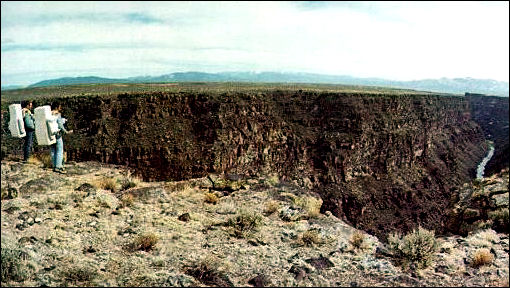
|
| Standing at the rim of the Rio Grande gorge near Taos, N. Mex., Apollo 15 astronauts Jim Irwin and Dave Scott see a landscape remarkably like the one they visited at the Hadley Rille landing site on the Moon. Each Astronaut team participated in a series of geology field trips to acquaint them with the kinds of field observation that would be most useful to lunar scientists, the types of rock specimen they should particularly try to sample, and the special problems in working with their equipment on the general terrain they would encounter. |


